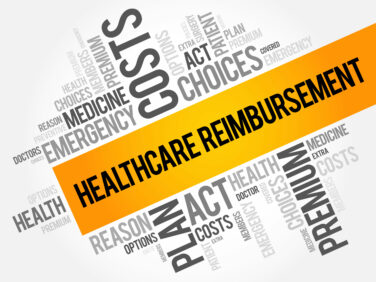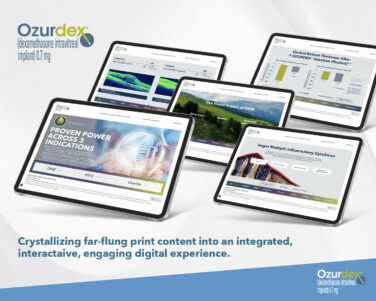What’s Working, What’s Not, and What’s Next
Communication between healthcare industries and Healthcare Professionals (HCP) is crucial when it comes to improved patient outcomes. As the world evolves with new innovations, so does the industry. The benefits of these changes are quicker and more accurate outreach to HCPs, so that they are more educated on their specialty topics thus increasing positive patient outcomes. PM360 reached out to ten specialists for their view on what strategies they believe will provide HCPs with the opportunity to advance in the healthcare industry. We asked:
• What tried and true methods of communication with HCPs will you continue implementing in your outreach strategies?
• What challenges still exist when it comes to getting HCPs timely and relevant information to best improve patient outcomes?
• What are some key things to consider when implementing a new outreach approach for HCPs?
• What is in the pipeline for HCP engagement? What new advances in this area are you excited about?
The opinions expressed by the authors in the Think Tank section are their own and do not necessarily reflect those of their affiliated companies or organizations.
 Alicia Cowley, MD, MBA
Alicia Cowley, MD, MBA
Director of Clinical Content, Phreesia
acowley@phreesia.com
As they navigate busy schedules and constant advancements in treatment and care options, many HCPs are overwhelmed by the overload of information available. In 2023 alone, there were more than 1.6 million new articles indexed on PubMed. HCPs don’t have enough time to sift through clinical information from medical journals or read all the daily inbox alerts they signed up for—especially if it’s irrelevant to their specific patients. Many cite too many emails (37%) and generic or irrelevant content (25%) as barriers to pharma digital communications, according to a 2023 Healio survey. Tools like UpToDate and EMR- based decision support are first-line resources HCPs use daily for clinical guidance as information on these platforms is written by clinical experts, highly searchable, and regularly updated. Professional organizations and industry conferences have also become trusted, go-to sources that HCPs check for the latest recommendations on gold standards of care.
However, these sources aren’t easy to quickly search for pertinent information on their patients. To keep HCPs informed of timely and relevant insights on the latest available therapies or changes in care standards, it’s important to deliver updates in easily accessible formats via channels they already use every day. HCPs want education on topics about their specialty and that impact their specific patient populations, such as new information about a medication they prescribe or patient support programs (PSPs). Providing them with concise messaging via text or as an update-style message within existing programs or software they’re already using can go a long way in capturing their attention. Delivering the right message to the right provider at the right moment is essential to successfully getting content to resonate. Providing resources like PSPs on demand for HCPs to share directly with patients can ultimately help improve treatment plans and lead to better patient outcomes.

Alaina Victoria, PT, DPT
Marketing and Sales Enablement Manager, OneStep
alaina@onestep.com
Healthcare providers grapple with an overwhelming influx of data, which hampers their ability to quickly extract actionable insights crucial for patient care. The extensive volume of information, stemming from electronic health records and diagnostic tools, leads to information overload and makes prioritizing and analyzing data challenging. Additionally, the lack of standardized formats exacerbates the issue, impeding seamless integration of disparate data sources.
To tackle this challenge, healthcare systems must invest in advanced analytics tools to streamline data processing and analysis, while keeping care patient-centric. These tools automate tasks like data aggregation and trend identification, facilitating more efficient and personalized
insight extraction. Furthermore, fostering a culture of data literacy and innovation among healthcare professionals is essential. Including providers in the process of adopting novel technology so that solutions are vetted and approved by the ones who will be using them the most. By providing training and resources designed with providers in mind, they can more easily navigate and interpret a multitude of important patient information, improving the care experience and decision-making processes.
Ultimately, embracing technology and promoting data- driven practices that truly makes life easier for healthcare providers can empower them to make informed decisions swiftly, leading to enhanced patient outcomes.
 Ronen Lavi
Ronen Lavi
Co-Founder and CEO, Navina
ronen@navina.ai
One major hurdle in the way of getting providers the information they need is the time and energy required to find the data that is timely and relevant to the patient encounter. Today’s patients receive care across numerous settings and platforms, giving them more opportunities for quality care,but exacerbating the already-significant administrative burden on providers. The wide variety of sources, such as hospitalization data that is not readily available to primary care providers, makes it very difficult to form a comprehensive understanding of a patient’s health status.
This challenge is further complicated by the countless hours physicians need to spend combing patient documents in search of key data points from which they can distill actionable insights. The disorganized collection of notes, reports, and results they must hunt through often consists of scanned documents, lacking in context and even mislabeled, leading to the infamous “death by a thousand clicks.”
It’s crucial for patients to have trusting interactions with their physicians and the current information overload directly impedes this essential connection. Without a solution that can cull and reconcile patient data from all relevant sources–EHRs, health information exchanges, and claims data, to name just a few–and then transform it into actionable health insights, physicians will continue to waste valuable time piecing together patient histories rather than engaging directly with patients. Both the quality of care and the patient-provider relationship will pay the price.
 Dan Rizzo
Dan Rizzo
VP, Global Business Consulting, Veeva Systems
businessconsulting@veeva.com
The challenge for field teams is getting the most relevant information to healthcare professionals (HCPs) in the moment of need. The more complex medicines become, the more doctors require fast access to specific content. Expectations have changed and HCPs now want on- demand answers from field teams to best serve patients. Biopharmas are making this shift to a field engagement model that combines the traditional ‘push’ with the newer ‘pull’ models. HCPs can now connect with field teams on their time and terms—in a compliant way. Field teams are rethinking their channel mix to achieve more meaningful HCP relationships through relevant resources that create an efficient path to patient treatment.
More service-focused engagement adds inbound channels such as compliant chat or video meetings to in-person meetings. These help to connect HCPs and reps in real- time, prioritizing responsiveness to provide the right information exactly when an HCP has a specific question. According to Veeva Pulse, on average, field teams can respond via compliant chat in less than five minutes by answering questions with compliant content, sending samples for new patient starts, or scheduling meetings
to dive into more detail. Companies are creating more than double the amount of digital interactions with HCPs without reducing in-person visits.
A two-way engagement model addresses current challenges by providing timely answers to key questions that arise from today’s complex new medicines at the time of need—even at the point of care.
 Mike Stout
Mike Stout
President of Commercial Solutions, Inizio Engage
inizioengagemarketing@inizio.com
The firepower of data-driven analytics has helped to better inform targeting, forecasting, and the incentive compensation plans to motivate reps to drive outreach and deliver the desired impact. Whether the physician engagement plan calls for field or virtual reps along with omnichannel outreach, the organization must be aligned to the data-fueled vision and must believe in it to carry the vision forward.
All new approaches should start with a diagnosis of the opportunity, drawing upon key data and insights on the product’s positioning within its lifecycle and marketplace. The subsequent solution design then reflects a forecast of the market opportunity and indicates the combination of resources that will best engage physicians. One then deploys resources based on the plan by hiring and training the necessary personnel, putting the CRM systems in place, developing the KPIs by which to measure performance, and creating incentive compensation packages based on the data-driven plan. The final step is to drive the execution of the designed plan, focusing on delivering solutions to healthcare professionals and patients.
As the plan is executed, data feedback generated in the field or via omnichannel engagement can be incrementally added to the algorithms driving the plan, allowing for near real- time adjustments. This continuous data-driven optimization ensures that the plan remains agile and responsive to the ever-changing market dynamics. By leveraging data as the connective currency, this approach enables a seamless integration of strategy, execution, and refinement which ultimately leads to more effective HCP engagement and improved outcomes.
The success of the new outreach approach hinges on management’s understanding of the data’s significance, its benefits for operations, and the implementation process. If top leadership lacks stability and fails to grasp the data and technology being utilized, it disrupts training and alignment within operational layers, thwarting the plan’s success. This instability can cause the entire system to falter and collapse, jeopardizing the initiative’s success.
 Christine Lee
Christine Lee
Head of Health Partnerships, AnalyticsIQ
christineb@analyticsiq.com
When implementing a new outreach approach aimed at healthcare providers (HCPs), there are several factors and challenges to keep in mind to ensure that the strategy is effective. The crux of the matter lies in the fact that there is a lack of personal insights about HCPs—from the types of
content they prefer, the channels through which they engage most effectively, and even their behaviors outside the clinic. Without understanding what captures their attention or knowing their personal and professional interests, healthcare marketers and educators are often taking a shot in the dark hoping their messages resonate.
However, with data and insight into the provider as a person, healthcare marketers and organizations have the unique opportunity to understand HCP preferences and behaviors, leverage the most effective channels of communication, increase content relevance, personalize at scale, and even measure success.
By considering these factors and leveraging the right data, healthcare organizations can craft and implement outreach strategies that are not only informed by deep insights into HCPs as individuals, but are also compliant, efficient, and exceptionally targeted. This approach not only enhances the quality of communication with HCPs, but also supports the ultimate goal of improving patient care outcomes.
 Maria Cipicchio
Maria Cipicchio
SVP, Marketing and Communications, OptimizeRx
Mcipicchio@optimizerx.com
Life sciences marketers should think about a patient-first approach, alignment of data sets, and predictive outreach deployment when considering new approaches to HCP outreach. With a patient-first HCP approach, a marketer considers how the patient journey impacts the HCP customer journey above all else. Brands know the qualification criteria, utilization management hurdles, and leakage points in their patient journey. Predicting these milestones in the real world and using those predictions to align content and timing of HCP outreach increases information relevance, response, and effectiveness. With the current wealth of both clinical and behavioral data, alongside growing AI capabilities, making real- time connections between patient and HCP customer journeys is becoming more achievable every day.
When thinking about engaging HCPs in an omni-channel environment, where the B2B and B2C lines are blurred, connected consumer and clinical data sets enable a marketer to maintain the precise predictive timing of the patient-first approach to HCP engagement across both professional and personal channels. This is possible through alignment of the HCP-as-a-consumer with their professional profile, using rigorous privacy-safe identity resolution across channels. In a recent OptimizeRx survey, HCPs reported consuming treatment- related media preferentially across more than 10 channels.
The survey also defined trends in the type of information that HCPs want to see pre-patient-visit, during visits, and post-visit. For example, clinical results are overwhelmingly viewed as the most useful pre-visit, while an HCP is reviewing patient charts. Specialty medication prescribing guidelines are valuable during patient visits, while prior authorization information is most useful after a patient visit.
The reality of how HCPs consume, and action, treatment-related information alongside the requirement of patient-relevance means that predictive engagement is the key to breaking through. In the future, if you aren’t predicting an HCP’s information needs by understanding when a specific doctor and patient come together, you’ll be moving too slow.
 Andrew Burkus
Andrew Burkus
Sr. Principal, IQVIA Digital Enablement
andrew.burkus@IQVIA.com
For years, the importance of “right message, right channel and right time” has been the mantra used to identify how we create successful interactions with our audiences—but is this enough? With digital at the center of today’s data- driven omnichannel strategies, successful brand marketers are accelerating their efforts to improve personalization and deliver more human digital engagements.
The path begins with a deeper understanding of your customer’s needs and joining these learnings with established customer personas and preferences. Beyond just favorite channels or preferred time of day, brand marketers are now using elements such as language, tone, sentiment, and learning style to create a more robust understanding of the needs of their audience. Disruptive technologies such as large language models (LLM), natural language processing (NLP), and GenAI are then utilized to deliver a more human touch to interactions with their audiences. Data-driven is thereby quickly transitioning to insight signal-driven omnichannel strategies and execution.
Our current knowledge of customer preference is now being expanded to include new insights into their learning styles, whether detailed studies are preferred over concise fact sheets, as an example. Also critical is using the proper sentiment and tone. If the language used in the materials being researched by the doctor highlights a concern about the struggles of patients under care, then this new insight is also being used to inform a better engagement. Insight into all of these criteria will make a message more relatable and increase relevance, drive engagement, and build the required trust.
Brands that integrate humanized learnings into their omnichannel execution will best address the evolving informational needs of their audience. Embracing this approach towards making digital interactions more human will not only increase receptivity to brand messaging, but open brands up to additional opportunities that can and will lead to long-lasting customer relationships.
 Sonam Dubey
Sonam Dubey
Partner, Beghou Consulting
sonam.dubey@beghouconsulting.com
AI-powered engagement will be a game-changer. In a world where HCPs are inundated with information and are increasingly digitally savvy, pharma companies that personalize outreach will gain a competitive edge. Personalization is a huge unmet need for HCPs, and AI will be a key enabler of personalization.
The key is to build microsegments. Companies must not only develop a nuanced view of HCPs’ prescribing activity and demographic profiles, but also granular insights related to behavior and preferences. These insights will help companies build microsegments where they can differentiate HCPs based on topics of interest, their preference for traditional versus digital engagement channels, how often they go online, their affinity for pharma content, and more. Then companies can use AI models to speed the development of personalized content across channels.
Companies could also use generative AI tools to create compliant content. Legal, regulatory, and marketing teams spend significant amounts of time reviewing and vetting medico-marketing content. As large language models become more robust and sophisticated, a company can train enterprise versions of these models on its brand voice and regulatory and compliance rules. Then these AI tools can produce an assortment of compliant content for the marketplace. This content will still require careful human review, but the smart use of generative AI can streamline this process and minimize review time. This is a potentially transformative use of AI that companies should explore.
Of course, to successfully embed AI in HCP engagement efforts, companies must put in place a sturdy and scalable data foundation that includes well-organized structured and unstructured data. AI tools can play an exciting role here too, helping pharma companies fill gaps in data and generate insights.
 Patrick Purcell
Patrick Purcell
President, The Inception Company
PPurcell@inceptioncompany.com
Innovative program formats and adult learning principles are key areas of focus in the healthcare professional (HCP) engagement pipeline.
The best methodologies that providers apply to engage HCPs often involve adult learning principles while utilizing live, hybrid, or virtual meeting technologies. The Teaching Excellence in Adult Literacy (TEAL) Center describes adult learning as a process centered around the why behind the content. “Because adults learn by doing, effective instruction focuses on tasks that adults can perform, rather than memorize.” It is crucial for HCP engagement formats to answer the “WIIFM” What’s in It for Me question clearly and concisely.
We see a lot of value in delivering highly visual, problem-solving based content that allows for self-learning and immediate application. Our clients often ask our team of producers to redesign their content outline into gamified modules. Highly interactive formats like team challenges and live leaderboards compel participants to draw from their own experiences to solve the issues at hand, leading to a much higher degree of information retention. This in turn creates a biorhythm of interactive feedback.
From the perspective of meeting objectives, it is also crucial to collect relevant data around HCP engagement to evaluate involvement in the program and retention of the content delivered. Without relevant data, it is difficult to gauge the value of the content provided and delivery tactics. We are most excited about the growing demand for creative engagements in the HCP engagement space. Our goal is to enhance HCP experiences, while ensuring adult learning principles meet creativity and real-time data, providing our clients the benefit of strong information retention among their participants, combined with the ability to make data-driven improvements.







